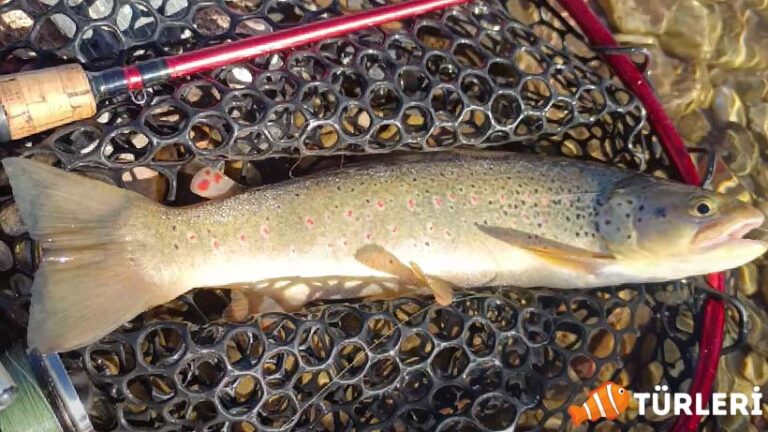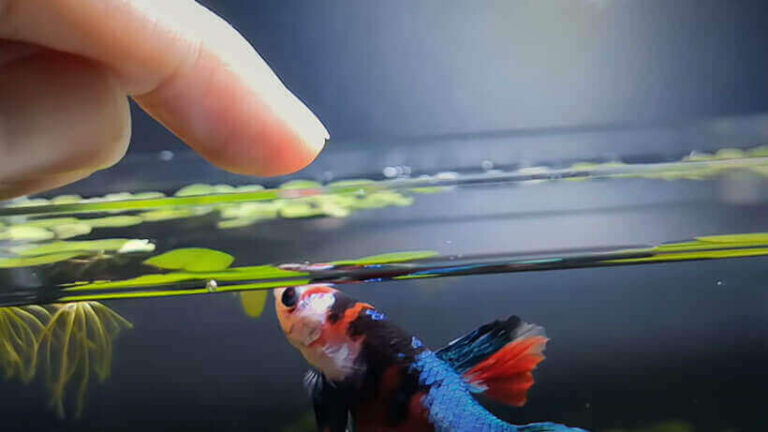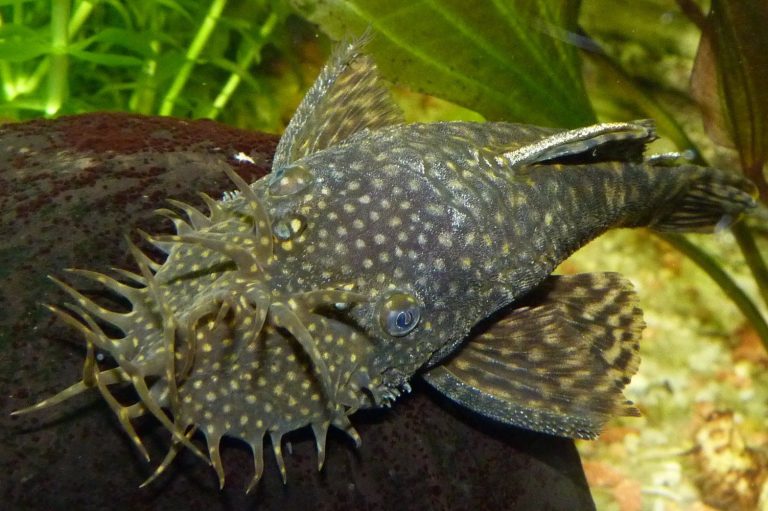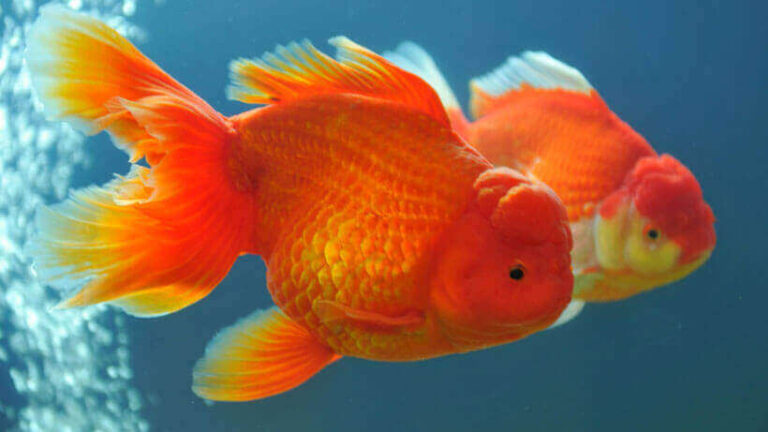Serpae Tetra
Serpae Tetra, also known as Hyphessobrycon eques or the Red Minor Tetra, is a popular freshwater fish native to the Amazon River basin in Brazil and Paraguay. They are a favorite among aquarium hobbyists due to their vibrant red color, hardy nature, and active behavior. Here is a guide to caring for Serpae Tetras, including their tank requirements, diet, tank mates, breeding, and more.
Serpae Tetra Fish Species Summary:
| Scientific Name: | Hyphessobrycon eques |
| Origin: | Amazon River basin, Brazil, and Paraguay |
| Diet: | Omnivore (feeds on both plant and animal matter) |
| Behavior: | Generally peaceful, but can nip fins of slow-moving or long-finned fish |
| Behavior Towards Their Own Species: | Schooling fish, prefers to be in groups of 5-6 or more |
| Swimming Zone: | Middle |
| Water Temperature: | 22 – 26 °C |
| Water Hardness: | 4 – 15 GH |
| pH Level: | 6.0 – 7.5 |
| Minimum Aquarium Volume: | 75 Liters (for a group of 5-6 individuals) |
| Adult Size: | 3 – 5 cm |
| Reproduction: | Egg scatterers, may eat their own eggs |
| Lifespan: | 5 – 7 years (with proper care) |
| Care: | Moderate, requires regular water changes and a well-planned tank to prevent stress |
Tank Requirements
- Size: Serpae Tetras are schooling fish, meaning they prefer to be in groups. It is recommended to keep a group of at least 5-6 Serpae Tetras to ensure they are comfortable and stress-free. A minimum tank size of 20 gallons (75 liters) is recommended for a group of 5-6 Serpae Tetras. This size allows them enough space to swim freely and exhibit natural behaviors.
- Water Parameters:
- Temperature: The ideal water temperature for Serpae Tetras is between 72-78°F (22-26°C). Consistent temperature within this range helps in keeping the fish healthy and stress-free.
- pH Level: Serpae Tetras prefer slightly acidic to neutral water. The pH level of the water should be maintained between 6.0-7.5. Regular testing and adjusting of the water pH is necessary to keep it in the optimal range.
- Water Hardness: The water hardness should be kept between 4-15 dGH. This range of water hardness is conducive for the fish’s health and well-being.
- Decoration:
- Plants: Serpae Tetras prefer tanks that are densely planted, as this resembles their natural habitat in the Amazon basin. Plants like Java Fern, Anubias, and Amazon Sword are excellent choices as they provide ample hiding spots and help in maintaining water quality.
- Open Swimming Space: While they appreciate plenty of plants, it is also important to provide open swimming spaces for the Serpae Tetras. This allows them to swim freely and comfortably.
- Driftwood and Rocks: Adding driftwood and rocks to the tank not only enhances its aesthetic appeal but also helps to mimic the natural environment of the Serpae Tetra. Driftwood can also help in slightly lowering the pH of the water, making it more comfortable for the fish.
Remember to regularly monitor the water parameters and adjust them as necessary to ensure the health and comfort of the Serpae Tetras. Additionally, while decorating the tank, ensure that there are no sharp objects that could potentially harm the fish.
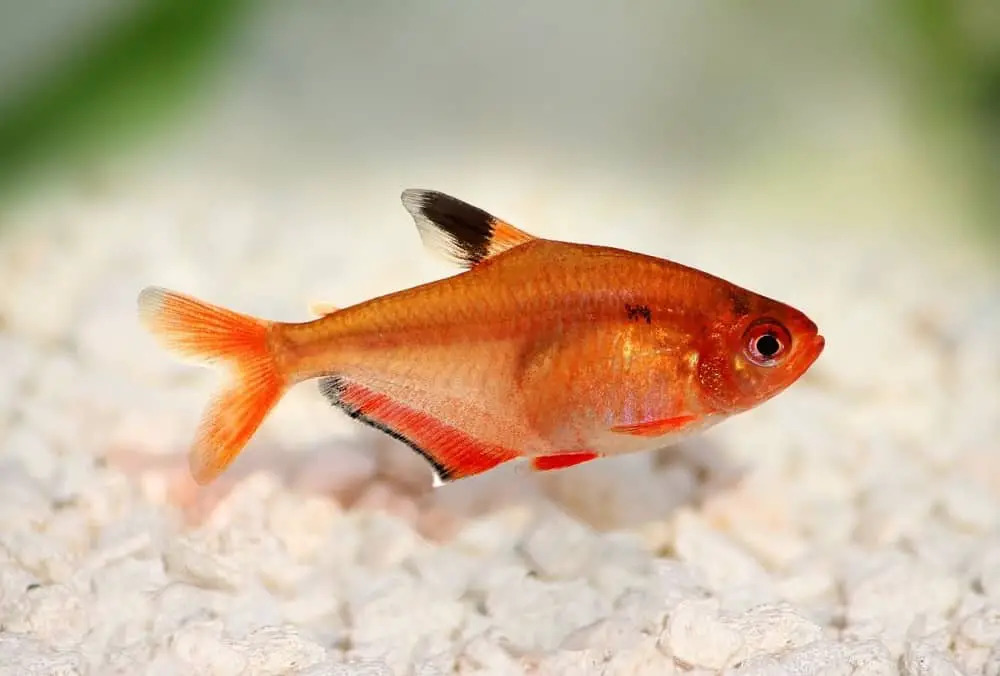
Diet
Serpae Tetras are omnivorous, which means their diet consists of both plant and animal matter. Providing a varied and balanced diet is essential for their health and well-being.
- Flake Food: High-quality flake food should be a staple in their diet. It provides essential nutrients and is easily digestible. Make sure to choose flakes that are specifically formulated for tropical fish.
- Live Foods: Live foods like brine shrimp, daphnia, and bloodworms are excellent for Serpae Tetras. They not only provide essential proteins but also encourage natural hunting behaviors. However, be cautious and make sure the live food is free from parasites and diseases.
- Frozen Foods: Frozen foods are also a good option as they usually contain the same nutritional value as live foods. Frozen brine shrimp, daphnia, and bloodworms are commonly available and accepted by Serpae Tetras.
- Vegetables: Vegetables like zucchini and spinach are also beneficial for Serpae Tetras. They provide essential vitamins and minerals. Make sure to blanch the vegetables before adding them to the tank to make them softer and easier to eat.
- Feeding Frequency: Serpae Tetras should be fed 2-3 times a day. Only feed them the amount they can consume within 2-3 minutes to avoid overfeeding and polluting the water.
It is important to vary the diet of Serpae Tetras to ensure they get all the necessary nutrients. Also, remember to remove any uneaten food after feeding to maintain the water quality. Regularly monitor the fish to make sure they are eating properly and not showing any signs of illness.
Tank Mates
Serpae Tetras are generally peaceful fish, but they have a tendency to nip at the fins of other fish, which can cause problems in a community tank. This behavior is more common when they are stressed or kept in small groups, so it is essential to keep them in a proper school of at least 5-6 individuals.
- Suitable Tank Mates:
- Danios: Danios are fast-moving and have short fins, which makes them less likely to be nipped by Serpae Tetras.
- Barbs: Most species of barbs are also fast-moving and have short fins, which makes them suitable tank mates. However, avoid keeping them with aggressive barb species like the Tiger Barb.
- Other Tetras: Other species of tetras with short fins can also be kept with Serpae Tetras. For example, Neon Tetras, Black Skirt Tetras, etc. However, avoid keeping them with tetras that have long fins like the Long-Fin Tetra.
- Rasboras: Rasboras are peaceful and fast-moving fish that can also be kept with Serpae Tetras.
- Corydoras Catfish: Corydoras are bottom-dwelling, peaceful fish that can also be suitable tank mates for Serpae Tetras.
- Avoid Keeping With:
- Angelfish: Angelfish have long fins and are slow-moving, which makes them susceptible to fin nipping by Serpae Tetras.
- Bettas: Bettas also have long fins and can be stressed by the active nature of Serpae Tetras.
- Guppies: Guppies have long, flowing fins that can be tempting for Serpae Tetras to nip.
- Slow-moving or Timid Fish: Any fish that is slow-moving or timid might get stressed due to the active nature of the Serpae Tetras.
- Number of Fish:
- It is important to maintain a proper balance in the aquarium. Overcrowding can lead to increased stress and aggression among the fish. It is recommended to keep Serpae Tetras in a group of at least 5-6 individuals to reduce stress and aggression.
Remember, while Serpae Tetras are generally peaceful, their fin-nipping tendency can cause problems in a community tank. Therefore, it is essential to carefully select tank mates and monitor their behavior to ensure the well-being of all fish in the aquarium.
Breeding
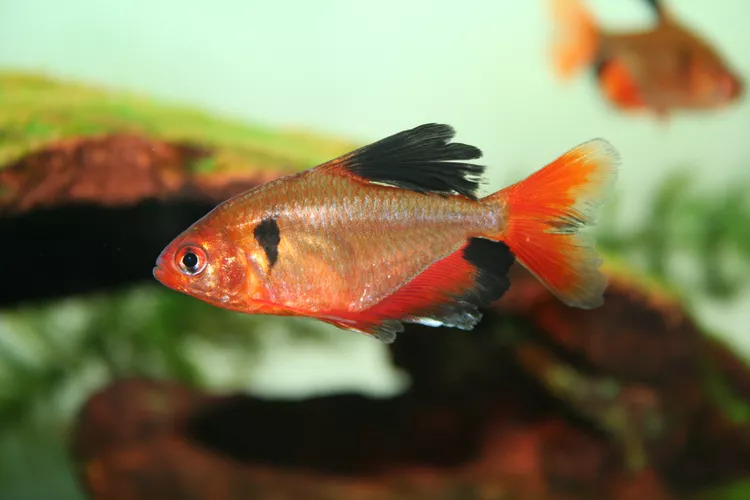
Breeding Serpae Tetras can be a bit challenging as they are egg scatterers and have a tendency to eat their own eggs. However, with the right setup and care, it is possible to successfully breed them.
Breeding Tank Setup
It is recommended to set up a separate breeding tank to create the optimal environment for breeding. The breeding tank should have the following characteristics:
- Water Parameters: Soft, slightly acidic water is preferred for breeding Serpae Tetras. The pH of the water should be around 6.5, and the temperature should be maintained at around 78°F (26°C).
- Plants: Add some fine-leaved plants like Java Moss or a spawning mop to the breeding tank. These will serve as a substrate for the female to lay her eggs on. The eggs will stick to the plants or spawning mop.
- Tank Size: A 10-20 gallon tank is usually sufficient for breeding Serpae Tetras.
Preparing the Breeding Pair
Select a healthy and mature breeding pair. The female will be plumper and rounder, while the male will have more vibrant colors.
- Feed the breeding pair with high-quality live foods like brine shrimp, daphnia, and bloodworms for a few days before introducing them to the breeding tank. This will help in conditioning the pair and encourage spawning.
Spawning
- Introduce the conditioned breeding pair to the breeding tank. It is common for the male to chase the female around the tank during the courtship period.
- Spawning usually occurs in the early morning. The female will scatter her eggs on the plants or spawning mop, and the male will fertilize them.
Post-Spawning Care
- After spawning, it is recommended to remove the parents from the tank to prevent them from eating the eggs.
- The eggs will hatch in about 24-36 hours, and the fry will become free-swimming in about 3-4 days.
- Feed the fry with infusoria or commercially available fry food until they are large enough to eat brine shrimp nauplii.
- Regular water changes and maintaining good water quality are essential for the healthy development of the fry.
Remember, breeding Serpae Tetras can be challenging, and it may take a few attempts to be successful. Be patient and adjust the setup and conditions as needed to optimize the breeding process.
Additional Tips
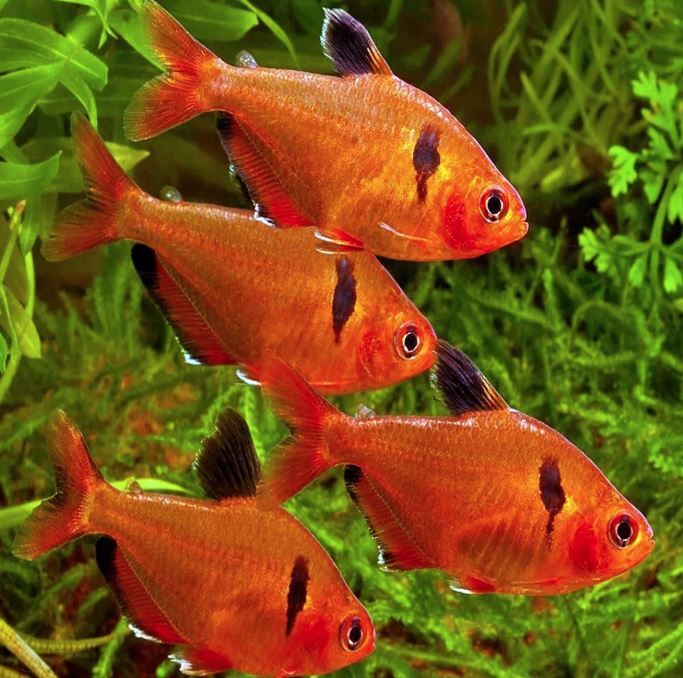
- Preventing Ich: Serpae Tetras are susceptible to ich, a common parasite in aquariums. Ich, or Ichthyophthirius multifiliis, is a protozoan parasite that appears as white spots on the fish’s skin, gills, and fins. To prevent ich infection, it’s crucial to maintain good water quality and avoid sudden changes in water temperature. Additionally, adding aquarium salt can help prevent ich as the parasite has difficulty surviving in slightly salty water.
- Regular Water Changes: To keep the water clean and the fish healthy, it is recommended to change about 25-30% of the aquarium water every week. This helps to remove waste products, excess food, and other debris from the water. Additionally, it helps to replenish essential minerals and trace elements that are important for the fish’s health.
- Observation: While this guide provides general guidelines for keeping Serpae Tetras, it’s important to remember that each aquarium and its inhabitants are unique. Factors like tank size, water parameters, and the presence of other fish species can all affect the well-being of your Serpae Tetras. Therefore, it is essential to observe your fish closely and adjust their environment, diet, and tank mates as needed to keep them happy and healthy.
- Quarantine New Fish: Before adding new fish to your aquarium, it’s always recommended to quarantine them for at least two weeks. This helps to prevent the introduction of diseases and parasites to your existing fish population.
- Avoid Overfeeding: Overfeeding can lead to water pollution and health problems for your fish. It is recommended to feed your Serpae Tetras only the amount they can consume in 2-3 minutes, 2-3 times a day.
Remember, a successful aquarium requires careful monitoring and maintenance. By following these additional tips, you can help ensure the health and happiness of your Serpae Tetras.

